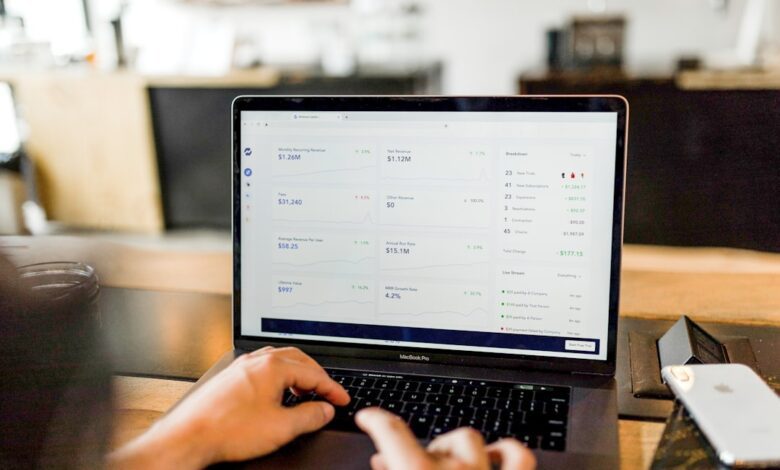Metals in Motion: Navigating Industrial Demand, Investment Strategies, and Economic Indicators

Metals play a crucial role in the global economy, serving both as essential industrial materials and valuable investment assets. As industries evolve and the demand for sustainable technologies increases, the dynamics of metal markets are shifting dramatically. This article delves into the multifaceted roles of various metals, beginning with silver, which balances its industrial applications with its allure as an investment. We will explore how copper prices serve as a barometer for global economic health, the growing demand for rare earth metals driven by green energy technologies, and the ongoing debate between platinum and palladium as investment options. Additionally, we will examine how metals can diversify investment portfolios, the influence of inflation on precious and industrial metal prices, the future of aluminum in a sustainable economy, and the effects of mining regulations on these vital resources. By understanding these interconnected themes, investors and industry stakeholders can navigate the complexities of metal markets and make informed decisions in an ever-changing landscape.
- 1. "Silver's Dual Role: Balancing Industrial Demand and Investment Appeal"
- 2. "Copper Prices as Economic Indicators: Understanding Global Trends"
1. "Silver's Dual Role: Balancing Industrial Demand and Investment Appeal"
Silver plays a unique and multifaceted role in the global markets, serving both as an essential industrial metal and a popular investment asset. This duality is largely driven by its properties and applications, which allow it to find relevance in various industries while also attracting investors seeking a hedge against economic uncertainty.
On the industrial side, silver is highly valued for its exceptional conductivity, thermal properties, and antibacterial qualities. It is widely used in electronics, solar panels, medical devices, and various manufacturing processes. The increasing adoption of green technologies, particularly in renewable energy sectors like solar power, has bolstered silver's industrial demand. As countries aim to reduce carbon emissions and transition to sustainable energy sources, the growth of solar energy installations is expected to significantly influence silver consumption.
Simultaneously, silver’s allure as an investment asset cannot be understated. Historically, it has been viewed as a safe-haven asset, similar to gold, particularly during periods of economic instability or inflation. Investors turn to silver not only for its intrinsic value but also as a way to diversify their portfolios. Its lower price point compared to gold makes it accessible for a broader range of investors, further enhancing its appeal during times of financial uncertainty.
The interplay between industrial demand and investment appeal creates a dynamic market for silver. Fluctuations in industrial usage can impact silver prices, as seen during economic downturns when industrial demand may wane. Conversely, heightened investment demand can drive prices up, particularly when market conditions encourage a flight to safety. This balancing act makes silver a compelling asset for both industrial and investment purposes, illustrating its critical role in the broader economic landscape.
As the world continues to evolve towards sustainable technologies and faces economic challenges, silver's dual role is likely to remain pivotal, making it an intriguing subject for both market analysts and investors alike.
Metals play a crucial role in both industrial applications and investment strategies, each influencing the market dynamics significantly. Silver, for instance, is unique in that it serves dual purposes: it is a vital component in various industrial processes, including electronics, solar panels, and medical applications, while also being a popular investment vehicle, often viewed as a safe haven during economic uncertainty. Its price movements can reflect broader economic trends, as industrial demand typically rises during periods of economic growth, whereas investment demand may increase during downturns.
Copper prices are a key indicator of global economic health due to its widespread use in construction, electrical wiring, and manufacturing. As economies grow, the demand for copper increases, driving prices up. Conversely, declining prices can signal economic slowdown or reduced industrial activity. The correlation between copper prices and economic indicators, such as GDP growth and manufacturing output, highlights its role as a barometer for global economic conditions.
The rise of green energy technologies has significantly impacted the demand for rare earth metals, which are essential for the production of batteries, wind turbines, and electric vehicles. As countries strive to reduce carbon emissions and transition to renewable energy sources, the demand for these metals is expected to skyrocket. This shift not only influences market prices but also raises questions about the sustainability of sourcing these materials, as many rare earth metals are concentrated in a few regions, often with complex geopolitical implications.
In the investment realm, the debate between platinum and palladium continues to evolve. Traditionally, platinum has been favored for its industrial uses in catalytic converters and jewelry, while palladium has gained prominence due to its increasing use in automotive applications, particularly in gasoline engines. Investors must weigh factors such as market demand, supply constraints, and technological advancements to determine which metal may yield better returns in the future.
Diversification is a fundamental principle of investment strategy, and metals often serve as a hedge against inflation and currency fluctuations. Precious metals, like gold and silver, are typically viewed as safe assets during economic instability, whereas industrial metals can provide growth potential during economic expansions. Incorporating a mix of metals can help balance risk and enhance portfolio resilience.
Inflation impacts the prices of both precious and industrial metals by eroding purchasing power and driving investors toward tangible assets. As inflation rises, the allure of metals as a store of value increases, often leading to price surges. Additionally, the costs associated with mining and production can rise with inflation, further influencing metal prices.
Aluminum has emerged as a critical player in the transition to a sustainable economy due to its lightweight properties and recyclability. As industries seek to reduce carbon footprints, aluminum's role in transportation, packaging, and construction is expected to expand. Innovations in production processes, such as low-carbon aluminum, will likely shape its future demand and market dynamics.
Lastly, mining regulations have a profound impact on metal prices. Stricter environmental and labor regulations can lead to increased production costs and supply constraints, causing prices to rise. Conversely, deregulation may boost production capacity but could raise ethical concerns regarding sustainability and local community welfare. As global markets navigate these regulatory landscapes, the interplay between policy and metal prices will remain a critical area of focus for investors and industry stakeholders alike.
2. "Copper Prices as Economic Indicators: Understanding Global Trends"
Copper is often referred to as "Dr. Copper" due to its ability to signal the health of the global economy. This is primarily because copper is a key component in various industries, including construction, electronics, and manufacturing. As such, fluctuations in copper prices can provide insight into prevailing economic conditions and future growth prospects.
When the global economy is thriving, demand for copper typically increases, leading to higher prices. This uptick in demand is driven by factors such as increased construction activity, expansion in manufacturing, and growing technological advancements. Conversely, during economic downturns, demand for copper tends to decline, resulting in lower prices. This inverse relationship makes copper prices a valuable barometer for investors and economists alike.
Recent trends have shown that copper prices are not only influenced by traditional supply and demand dynamics but also by geopolitical events and trade policies. For instance, tensions between major economies, such as the United States and China, can lead to price volatility as market participants react to potential tariffs or trade restrictions. Additionally, supply chain disruptions, such as those caused by natural disasters or logistical challenges, can further impact copper availability and pricing
In conclusion, the intricate landscape of metal markets reveals the multifaceted roles that various metals play in both industrial applications and investment strategies. Silver, with its unique dual nature, exemplifies this balance, serving essential functions in technology and manufacturing while also attracting investors seeking a safe haven. Similarly, copper prices serve as a barometer for global economic health, reflecting trends that influence both consumption and investment decisions.
As the push for green energy technologies accelerates, the demand for rare earth metals is poised to rise, further emphasizing the importance of these materials in a sustainable future. The ongoing debate between platinum and palladium as superior investments highlights the significance of market dynamics and individual investor goals. Moreover, metals remain vital for diversifying investment portfolios, as they can mitigate risks associated with economic fluctuations.
The impact of inflation on the prices of precious and industrial metals cannot be understated; it shapes investment strategies and market behavior. Additionally, the future of aluminum in a sustainable economy holds promise, particularly as industries seek lighter, more efficient materials.
Finally, the role of mining regulations in shaping metal prices underscores the complex interplay between policy and market dynamics. As we move forward, understanding these factors will be crucial for investors, manufacturers, and policymakers alike, ensuring that the metal markets continue to evolve in response to global challenges and opportunities.





